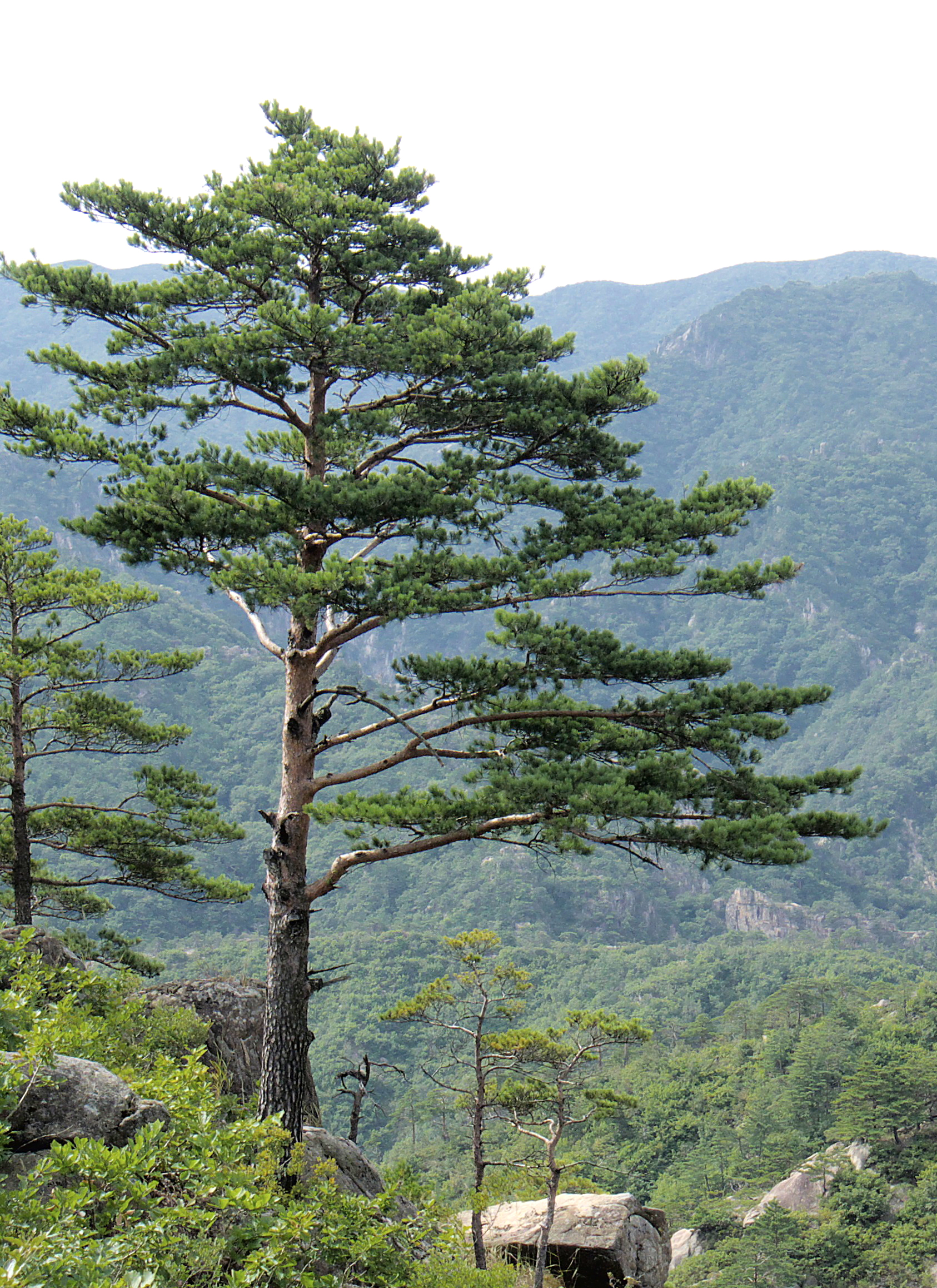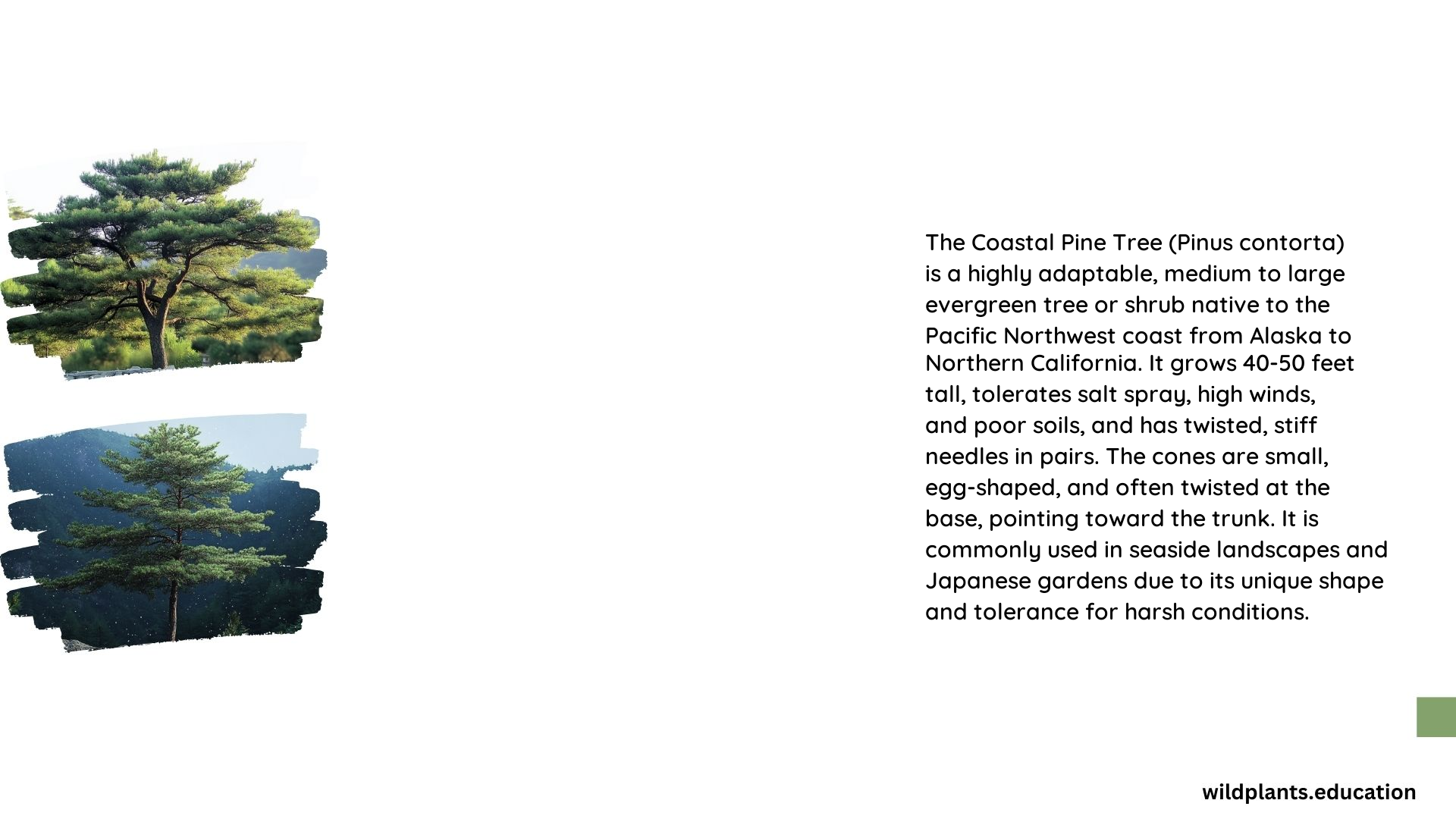Coastal Pine Trees, also known as Shore Pines, are a unique and resilient type of evergreen tree that have adapted to thrive in the harsh, windy conditions of coastal regions. These trees are known for their twisted, contorted branches and their ability to withstand the constant battering of salt spray and strong winds. In this comprehensive guide, we’ll explore the characteristics, adaptations, and various uses of the Coastal Pine Tree.
What are the Characteristics of Coastal Pine Trees?

What is the Typical Height of Coastal Pine Trees?
Coastal Pine Trees typically grow between 50 to 100 feet tall, with some varieties reaching up to 115 feet in height. Their growth is often stunted and contorted due to the constant wind exposure.
How do Coastal Pine Trees’ Branches and Needles Appear?
The branches of Coastal Pine Trees are often twisted and contorted due to the constant wind. The needles grow in bundles of two, alternately along the stem, and are typically 1.5 to 3 inches long, with a yellow-greenish to green color.
| Characteristic | Description |
|---|---|
| Height | 50 to 100 feet, with some varieties reaching up to 115 feet |
| Branch Structure | Twisted and contorted due to wind exposure |
| Needle Characteristics | Grow in bundles of two, 1.5 to 3 inches long, yellow-greenish to green in color |
How do Coastal Pine Trees Adapt to their Harsh Environment?

What is the Root Structure of Coastal Pine Trees?
Coastal Pine Trees have a robust root system that helps them anchor in the soil and withstand strong winds. This extensive root network is crucial for their survival in the coastal environment.
How do Coastal Pine Trees Protect Themselves from Salt Spray and Wind Damage?
The bark of Coastal Pine Trees is thick and scaly, providing protection from the harsh elements of the coastal environment, including salt spray and strong winds.
What is the Growth Pattern of Coastal Pine Trees?
Coastal Pine Trees grow slowly and steadily, with a focus on developing a strong root system and thick bark to resist the harsh conditions of their environment.
| Adaptation | Description |
|---|---|
| Root Structure | Robust and extensive, helping to anchor the tree in the soil |
| Bark Thickness | Thick and scaly, providing protection from salt spray and wind damage |
| Growth Pattern | Slow and steady, with a focus on developing a strong root system and thick bark |
What are the Uses of Coastal Pine Wood?
How is Coastal Pine Wood Used in Construction?
Coastal Pine wood is highly valued for its durability and resistance to rot and insect damage, making it a popular choice for building and construction projects.
How is Coastal Pine Wood Used in Furniture Making?
The unique grain pattern of Coastal Pine wood is often used in the production of furniture, particularly for outdoor use, where its resistance to the elements is a valuable asset.
How is Coastal Pine Wood Used in Paper Production?
The high cellulose content of Coastal Pine wood makes it a valuable resource for paper production, as the wood pulp can be used to create a variety of paper products.
| Use | Description |
|---|---|
| Construction | Highly durable and resistant to rot and insect damage |
| Furniture Making | Valued for its unique grain pattern, often used for outdoor furniture |
| Paper Production | High cellulose content makes it suitable for paper production |
What are the Measurements and Processing Methods for Coastal Pine Wood?
What is the Typical Log Diameter for Coastal Pine Trees?
Coastal Pine logs are typically harvested at diameters between 10 to 30 inches, depending on the specific variety and growth conditions.
What is the Wood Density of Coastal Pine?
The wood density of Coastal Pine is around 0.35 to 0.45 g/cm³, making it a relatively dense and durable wood.
How is Coastal Pine Wood Processed?
Coastal Pine wood is processed through sawmilling, planing, and drying to produce various wood products, such as lumber, plywood, and paper.
| Measurement/Processing | Description |
|---|---|
| Log Diameter | 10 to 30 inches |
| Wood Density | 0.35 to 0.45 g/cm³ |
| Processing Methods | Sawmilling, planing, and drying |
References
- North Carolina Extension Gardener Plant Toolbox – https://plants.ces.ncsu.edu/plants/pinus-contorta/
- Portland.gov – https://www.portland.gov/sites/default/files/2022/pinus-cheatsheet-updated.pdf
- Bonsai Mirai – https://bonsaimirai.com/blog/pine-identification
